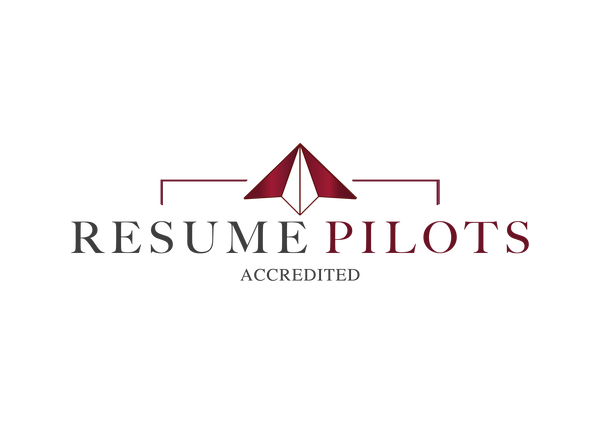
From Brand to Influence — How Executives Use Personal Branding Strategically (Without Self-Promotion)
From Brand to Influence — How Executives Use Personal Branding Strategically (Without Self-Promotion)
Interview with Zoe, CEO of Resume Pilots
Interviewer: Many executives say, “I’m not job hunting, do I really need a personal brand?” Is this just a trend?
Zoe:
It’s not about job hunting. It’s about career insurance. Your personal brand is the one part of your professional identity that travels with you, whether you change companies, industries, or step into board and advisory roles.
Here’s the truth:
Career mobility is now built on visibility and perception, not tenure.
If people can’t clearly articulate your value, they can’t champion you for the next move. That’s why I tell executives; your brand isn’t for today, it’s for your future options.
The great thing about personal branding is that it’s not about doing more; it’s about being clearer. It’s about defining the value you bring, then consistently showing how that value supports business goals, advances strategy, and demonstrates that you’re already operating at a board level, whether or not your title reflects it yet.
Interviewer: A lot of leaders worry about looking self-promotional. How do you build visibility without ego?
Zoe:
That’s the number one concern I hear. Let’s settle it: credibility is not the same as self-promotion. And it’s not bragging if it’s true.
Executives shouldn’t “post to perform.” They should publish to position. And not just posting online either. This is as much about what you share within your organization as it is about what you say online. Share insight, not identity. Don’t talk just about yourself; talk about the problems you solve and the decisions you’ve made and the lessons the sector can learn.
Try this:
- The real challenge leaders face in moments like that is…
- Use numbers, lessons, industry observations
- Never position yourself as perfect, position yourself as practised
Influencers seek attention. Leaders seek to story tell, in order to advance towards goals
That’s why at Resume Pilots, when we write executive bios or LinkedIn profiles, we focus on market language as well as personal storytelling. We want decision-makers to say, “I trust this person’s judgement”
Interviewer: What if someone wants to start, but has never considered their ‘personal brand’ before? Where should they begin?
Zoe:
Start privately, not publicly. Most executives don’t need content, they need clarity.
I recommend the “One Insight, One Interaction” strategy:
- One Insight: Once a month, share a meaningful lesson or perspective; on LinkedIn, in a leadership email, or during a roundtable. Anchor it in your experience or decision-making. You’re not giving away free advice; you’re demonstrating judgement. This is how you lead thinking, not just participate in it
- One Interaction: Comment deliberately on another leader’s post, presentation, or article. Not with praise, but with perspective. Over time, this builds recognition: you become the executive known for how you think, not just what you do. The goal isn’t visibility for visibility’s sake. It’s to establish intellectual leadership, so when the conversation moves to strategy, your voice is already in the room
You don’t need to be prolific.
You need to be perceived.
That’s why our Executive Bio and LinkedIn positioning services often come first, because if your foundation isn’t clear, your visibility becomes noise.
Interviewer: What about criticism? What if people disagree or challenge what I say?
Zoe:
If nobody ever disagrees with you, you’re not leading, you’re blending in.
As John Wooden famously said…
“If you’re not making mistakes, then you’re not doing anything. I’m positive that a doer makes mistakes”
Criticism isn’t the danger. Misinterpretation is.
Which is why you must build consistency. If you show up with the same principles, the same leadership stance, over time, people won’t always agree, but they’ll understand you. And over time, you’re likely to be proved right anyway.
When we build leadership brands, we don’t chase popularity. We build predictability of principle. Especially for board and PE-facing clients.
When your brand is clear, criticism becomes context, not character attack
Outside of the corporate world, there’s a saying: “You haven’t made it until someone disagrees with you.” I’m not talking about trolls or anonymous critics — that noise is irrelevant. What matters is this: when your perspective is clear and strong enough to be noticed, it will naturally attract both agreement and resistance.
Disagreement isn’t a threat to your brand. It’s a signal that you’ve moved from invisible to influential.
Interviewer: I work in a regulated or conservative industry (finance, legal, defence). How do I build a brand safely?
Zoe:
Thought leadership isn’t just about opinion. It’s also about perspective.
You don’t need to comment on politics, trends, or personal matters. Focus on:
- Risk
- Governance
- Decision-making
- Transformation
- Capital / People / Change strategy
Executives in regulated industries build influence through disciplined transparency, not volume. You may not be able to speak freely about every topic, but you can lead conversations around the trends, challenges, risks and innovations shaping your sector.
In highly regulated environments, thought leadership is often valued more, not less. Regulation is meant to safeguard standards and guide innovation, not silence the people responsible for driving it. And if your industry treats regulation as a barrier rather than a framework, that is precisely where your voice is most needed.
Silence leaves a vacuum. Leadership fills it.
Interviewer: If someone only had time for one brand asset; where should they start? Resume, Bio, LinkedIn?
Zoe:
Start with the Bio. Every senior conversation begins with: “How do I introduce you?”
Your bio is used:
- In boardrooms
- In private introductions
- In conference speaker lists
- In investor or advisory dossiers
Resumes get read once.
Bios get circulated.
That’s why our Executive Bio Writing service at Resume Pilots exists; to give leaders a strategic asset they can use everywhere.
Zoe’s 30-Minute Executive Brand Routine
|
Action |
Why It Matters |
|
Write down one leadership lesson each month |
Creates proof of judgement |
|
Comment meaningfully on one post/memo |
Visibility without exposure |
|
Refresh bio or headline quarterly |
Keeps perception aligned |
|
Screenshot wins and metrics |
Fuels future brand assets |
Final Questions Every Leader Should Ask Themselves
1️⃣ “If someone introduced me tomorrow at a board meeting, do I know what they’d say?”
2️⃣ “Have I earned trust, or just built performance?”
3️⃣ “If I disappeared for 90 days, would my reputation grow, stay flat, or vanish?”
When You’re Ready to Be Known for Your Leadership, Not Just Your Work
We specialise in Executive Bios, LinkedIn positioning and leadership narratives built for boardrooms, investors and succession pathways.
🖋 Resume Pilots: Leadership Branding for the C-Suite
Tomorrow – The Final Edition: Your Full Brand Blueprint (2,000 Words)
Day 5 will synthesise everything:
- The psychology, positioning and protection of brand
- How to turn brand into real leverage; influence, opportunities, legacy
- Your leadership blueprint for 2025 and beyond
Because a reputation is not a message.
It’s a long-term strategy.
To find out more about the work we do at Resume Pilots, for C-Suite or aspiring C-Suite professionals, then visit www.resumepilots.com
If you would like to book a short call where you can ask questions and learn about our process, you can find a time to suit you with this link: https://www.resumepilots.com/pages/untitled
To get in touch with us, you can email us at team@resumepilots.com or visit our LinkedIn company page https://www.linkedin.com/company/resumepilots/

